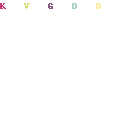Constantly Varied High Intensity Functional Movement: Superior for size & strength (*study)
 The definition of Crossfit is Constantly Varied High Intensity Functional Movement. Work hard while exposing your body to a variety of physical stressors that carry over into being able to run faster and longer, jump higher, lift heavier stuff, etc…and you’re going to get the greatest adaptations in terms of muscular strength and size. The terms “varied” and “intensity” warrant no further explanation (right?), but we should note that the opposite of functional training isn’t dysfunctional training or non-functional training (who would do that???), but rather structural training (Siff). Structural training affects the integrity of the muscle and aims to increase its size (aka cross sectional area, or CSA). While functional training will induce positive gains in CSA, the connection between structural training producing functional adaptations is far less proportionate.
The definition of Crossfit is Constantly Varied High Intensity Functional Movement. Work hard while exposing your body to a variety of physical stressors that carry over into being able to run faster and longer, jump higher, lift heavier stuff, etc…and you’re going to get the greatest adaptations in terms of muscular strength and size. The terms “varied” and “intensity” warrant no further explanation (right?), but we should note that the opposite of functional training isn’t dysfunctional training or non-functional training (who would do that???), but rather structural training (Siff). Structural training affects the integrity of the muscle and aims to increase its size (aka cross sectional area, or CSA). While functional training will induce positive gains in CSA, the connection between structural training producing functional adaptations is far less proportionate.
Given our definitions, and our experience with training and coaching, we weren’t surprised at the results of a recently published study that examined intensity and variation in several different formats (constant intensity/varied exercise, varied intensity/constant exercise, varied intensity/varied exercise). As we would have predicted, the group doing the constantly intense work with the constant variation, gained the most strength and muscle mass. Although the size gains were marginally better than the other groups (not rising to the level of statistical significance in some comparisons), the strength gains were clearly superior. Here’s a look at the training protocols used for the various groups:
 The strength gains looked like this (CIVE stands for Constant Intensity, Varied Exercise – aka the group that was woaking at a high level of intensity while changing up their movements):
The strength gains looked like this (CIVE stands for Constant Intensity, Varied Exercise – aka the group that was woaking at a high level of intensity while changing up their movements):
 Interestingly, the CIVE group was the only one to experience hypertrophy in all of the leg muscles examined, which obviously was a contributing factor in it’s superiority for muscular gains:
Interestingly, the CIVE group was the only one to experience hypertrophy in all of the leg muscles examined, which obviously was a contributing factor in it’s superiority for muscular gains: So there you have it – the Crossfit prescription for variety and intensity is your best bet for strength as well as lean mass…you should be doing high intensity, varied work – and as is made obvious by this study, it should be functional (deadlifts, squats, and lunges all contributed to the maximal gains experienced by the CIVE group).The only surprise in this study came in the form of the publisher, because the last place we’d have expected to see the Crossfit method being touted as superior to others, is in the Journal of Strength and Conditioning Research…the NSCA’s publication.
So there you have it – the Crossfit prescription for variety and intensity is your best bet for strength as well as lean mass…you should be doing high intensity, varied work – and as is made obvious by this study, it should be functional (deadlifts, squats, and lunges all contributed to the maximal gains experienced by the CIVE group).The only surprise in this study came in the form of the publisher, because the last place we’d have expected to see the Crossfit method being touted as superior to others, is in the Journal of Strength and Conditioning Research…the NSCA’s publication.
Here’s a look:
J Strength Cond Res. 2014 May 14. [Epub ahead of print]
Changes in exercises are more effective than in loading schemes to improve muscle strength.
Fonseca RM1, Roschel H, Tricoli V, de Souza EO, Wilson JM, Laurentino GC, Aihara AY, de Souza Leão AR, Ugrinowitsch C.
Author information
Abstract
This study investigated the effects of varying strength exercises and/or loading scheme on muscle cross-sectional area (CSA) and maximum strength after four strength training loading schemes: constant intensity and constant exercise (CICE), constant intensity and varied exercise (CIVE), varied intensity and constant exercise (VICE), varied intensity and varied exercise (VIVE). Forty-nine individuals were allocated into five groups: CICE, CIVE, VICE, VIVE, and control group (C). Experimental groups underwent a twice a week training for 12 weeks. Squat 1RM was assessed at baseline and after the training period. Whole quadriceps muscle and its heads CSA were also obtained pre- and post-training. The whole quadriceps CSA increased significantly (p<0.05) in all of the experimental groups from pre- to post-test in both the right and left legs: CICE: 11.6% and 12.0%; CIVE: 11.6% and 12.2%; VICE: 9.5% e 9.3% and VIVE: 9.9% and 11.6%, respectively. The CIVE and VIVE groups presented hypertrophy in all of the quadriceps muscle heads (p<0.05), while the CICE and VICE groups did not present hypertrophy in the vastus medialis and rectus femoris (RF), and in the RF muscles, respectively (p>0.05). The CIVE group had greater strength increments than the other training groups (Effect size confidence limit of the difference -ESCLdiff CICE: 1.41 – 1.56; VICE: 2.13 – 2.28; VIVE: 0.59 – 0.75). Our findings suggest: a) CIVE is more efficient to produce strength gains for physically active individuals; b) as long as the training intensity reaches an alleged threshold, muscle hypertrophy is similar regardless of the training intensity and exercise variation.


